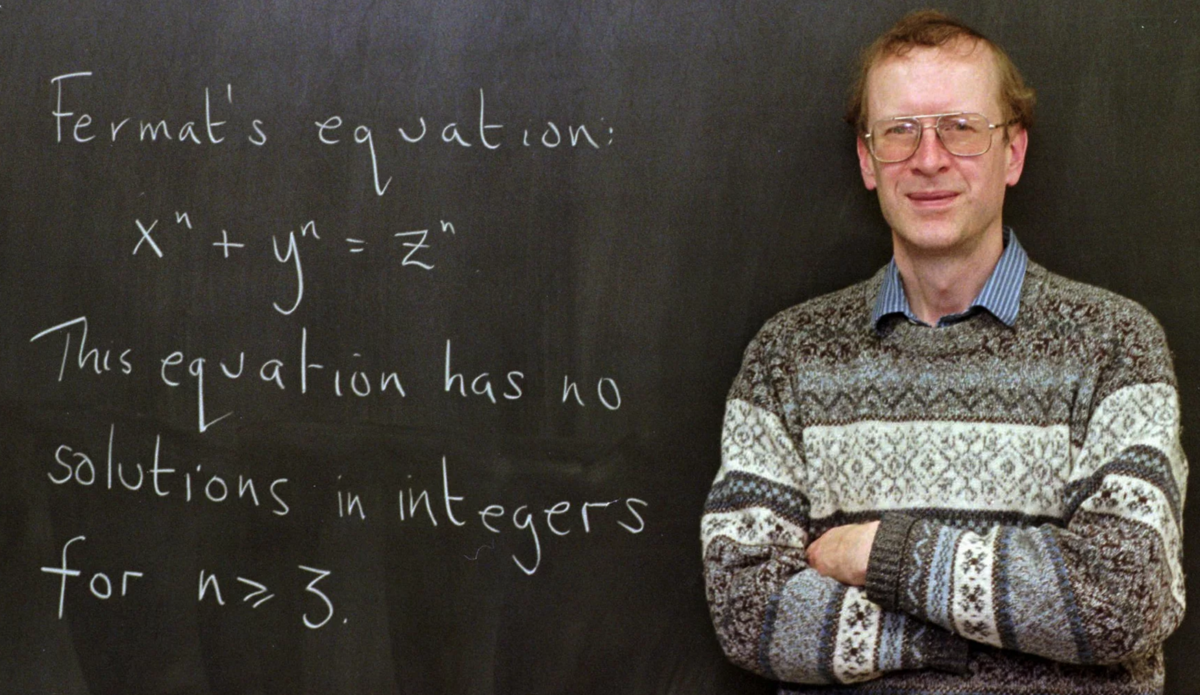Fermat's Last Theorem

Andrew Wiles, pictured above, was recently awarded the 2016 Abel Prize for his 1994 proof of Fermat's last theorem .
Suppose n = 2 0 1 6 and ∣ x ∣ , ∣ y ∣ , ∣ z ∣ are all less than 10. How many solutions in integers are there to the equation on the chalkboard?
Note: A solution here refers to an ordered triple ( x , y , z ) .
The answer is 73.
This section requires Javascript.
You are seeing this because something didn't load right. We suggest you, (a) try
refreshing the page, (b) enabling javascript if it is disabled on your browser and,
finally, (c)
loading the
non-javascript version of this page
. We're sorry about the hassle.
2 solutions
Damn. Had I seen this picture with the xyz != 0, I probably would have had a better chance at this problem rather than reading it straight out that it says there are no integer solutions.
Log in to reply
@Nick Benallo That makes sense... I mainly just thought it was funny that all of the articles reporting this prize have a picture of Wiles in front of an incomplete version of the theorem! :)
Yeah ! Nice problem ! but this ought to be level 5 isn't it ?
Log in to reply
Hmm, well, the solution (given Fermat's Last Theorem, which is obviously Level 5+) is actually reasonable simple. Hopefully someone will post one soon :)
Log in to reply
As the hint suggests, there is no solution, unless xyz=0.
A trivial solution is x=y=z=0.
Apart from this, we have solutions in the form of 0 < |x| = |z| and y=0 or x=0 and 0<|y|=|z|. Due to symmetry, it is enough to determine the number of solutions in the first case and double it (plus add 1 (the trivial all-zeros case)).
As |x|<10, we can choose from the integers {1,2,3,4,5,6,7,8,9} for |x|=|z| (9 values). As we are using absolute value, both x and z can either be positive or negative, so we have 4 groups of cases: +-, ++, -- and -+ .
4 × 9 = 36
36 × 2 + 1 = 7 3 .
(It's quite a shame, that it is a multiple choice question, as I chose 19 (2×9+1), by not considering the negative numbers first time. If I had the 3 tries as normal, I would have got it right the second time.)
Log in to reply
@Zee Ell – Great solution! I was wrong 'cause I forgot the negative cases.
@Zee Ell – Thank u for your hint.
@Zee Ell – Bah! I thought it was 109, because I screwed up and allowed z=0. If only it were still 2015 :P
Why should this be level 5? It is a simple counting problem - maybe combinatorics level 3?
The theoram written is incomplete. It has trivial solutions although n ≥ 3 . Trivial solutions includes that either x or y = 0. Since ∣ x ∣ , ∣ y ∣ , ∣ z ∣ < 1 0 we have − 1 0 < x , y , z < 1 0 we have total 7 3 tuples . ( x , y , z ) = ( 0 , 0 , 0 ) , ( 0 , 1 , 1 ) . . . ( 0 , 9 , 9 ) , ( 0 , 1 , − 1 ) . . . ( 0 , 9 , − 9 ) , ( 0 , − 1 , 1 ) . . . ( 0 , − 9 , 9 ) , ( 0 , − 1 , − 1 ) . . . ( 0 , − 9 , − 9 ) , ( 1 , 0 , 1 ) . . ( 9 , 0 , 9 ) , ( 1 , 0 , − 1 ) . . . ( 9 , 0 , − 9 ) , ( − 1 , 0 , 1 ) . . . ( − 9 , 0 , 9 ) , ( − 1 , 0 , − 1 ) . . . ( − 9 , 0 , − 9 )
Hint: That's not exactly the full theorem... Here's a fixed version:
Note that x y z = 0 is a necessary condition, but not yet sufficient. What are all of the cases that we should consider?